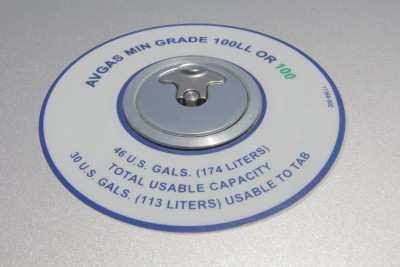Thu, Jul 29, 2010
Agency Sets No Deadline For Reduction Of Unleaded Avgas
 The EPA on Monday told the General Aviation Avgas Coalition
that it will work with the general aviation industry and the FAA as
the government and the industry seek a safe, viable alternative to
the current formulation for aviation gasoline, which uses a lead
additive. The commitment to work with industry came in a written
response to several questions submitted to the agency by the avgas
coalition.
The EPA on Monday told the General Aviation Avgas Coalition
that it will work with the general aviation industry and the FAA as
the government and the industry seek a safe, viable alternative to
the current formulation for aviation gasoline, which uses a lead
additive. The commitment to work with industry came in a written
response to several questions submitted to the agency by the avgas
coalition.
In a letter from Margo Tsirigotis Oge, director of the EPA's
Office of Transportation and Air Quality, the agency told the
coalition, "EPA has not established or proposed any date by which
lead emissions from aircraft operating on leaded avgas would need
to be reduced. In fact EPA does not have authority to control
aviation fuels."
EPA, she noted, is responsible for determining which chemical or
physical properties of a fuel or fuel additive endangers the public
health. However, only the FAA has the authority to regulate which
fuels aircraft may burn. Oge continued, "[H]ence, the EPA is
coordinating closely with FAA as we evaluate emissions of lead from
piston-engine aircraft."
"We see EPA's announcement as a positive step in finding a safe,
viable alternative to 100LL," said Tom Poberezny, EAA
chairman/president. "It reaffirms there is no immediate threat to
the availability of 100LL as we pursue a long-term solution to
identify and transition to an unleaded fuel."

Finally, the EPA assured the coalition that it recognizes the
value of general aviation, and especially piston-powered general
aviation, to the nation and the national economy. "EPA recognizes
the value of piston-engine general aviation throughout the United
States and specifically in remote regions," wrote Oge. "Any EPA
action to require piston-engine aircraft to reduce emissions of
lead in the future will involve a thorough public process of
identifying options and will consider safety, economic impacts and
other impacts. The EPA is committed to working with these
stakeholders to keep piston-engine aircraft flying in an
environmentally acceptable and safe manner throughout the United
States."
More News
LinxUs System Adds Capabilities for Data-Driven Operators Textron Aviation announced another option for operators processing their post-flight data, adding interoperability with GE>[...]
Aero Linx: The de Havilland Moth Club Ltd The de Havilland Moth Club evolved from a belief that an association of owners and operators of Moth aeroplanes should be formed to create>[...]
(Pilot) Inadvertently Applied Excessive Braking Action, And The Airplane Nosed Over Analysis: The pilot reported that, while landing at a remote, rough and uneven airstrip in a tai>[...]
“MCADT is committed to rapidly integrating armed first-person view drones into the FMF, enhancing small-unit lethality and providing organic capabilities that warfighters cur>[...]
From 2017 (YouTube Edition): Major Engine Supplier Joins Forces With Small Aircraft Manufacturer… GE recently made an agreement with Venom Aircraft to supply engines for the>[...]
 Citation Operators Get Another Flight Data Connection for QA
Citation Operators Get Another Flight Data Connection for QA ANN's Daily Aero-Linx (06.01.25)
ANN's Daily Aero-Linx (06.01.25) NTSB Final Report: Bellanca 8GCBC
NTSB Final Report: Bellanca 8GCBC Aero-News: Quote of the Day (06.01.25)
Aero-News: Quote of the Day (06.01.25) Classic Aero-TV: High-Speed Match-up - Venom and GE Rebirth A Legend
Classic Aero-TV: High-Speed Match-up - Venom and GE Rebirth A Legend




